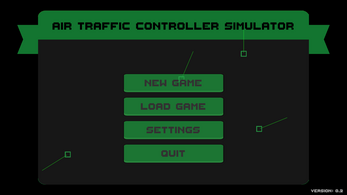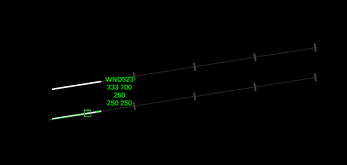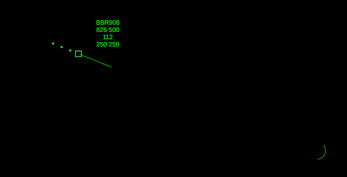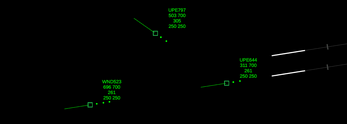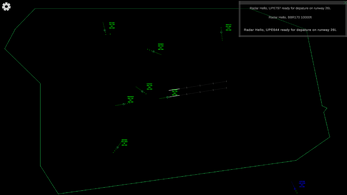Air Traffic Controller Simulator
A downloadable game for Windows
1. Introduction
Firstly, thank you for your interest in my game. This is a guide to the game, where you can refer to if you are unsure or want to learn the basics about the game.
It must also be made clear that nothing in this game can be transferred to reality. A large part of the game has been modelled as realistically as possible, but some things differ significantly from reality.
With that said, I hope you have a good gaming experience and if, despite this guide, you have any questions, bugs or suggestions for improvement, please feel free to leave me a comment or rating.
Thank you!
2. Difficulty
The difficulty of the game can be adjusted to suit your skill level. If the time scale is increased by 1, the game runs 100% faster. The airplanes will also spawn faster! You can select a time scale between 1 and 5. You can also set how many planes are spawned per hour. Please note that the airplanes per hour refer to a timescale of 1. The Departure and Approach Planes are spawned independently of each other, which means that there can be different numbers of planes of each type. For beginners, a time scale of 2 with approx. 30 aircrafts per hour is recommended. It is best to select 15 Departure and 15 Approach aircrafts. Once you feel comfortable with this, you can increase the speed of the game.
3. Plane
A general differentiation is made between departure aircrafts and arrival aircrafts. However, each aircraft can also have three different ‘states’:
If the entire aircraft appears green, this indicates that this aircraft is in your airspace and that you have already ‘communicated’ with it (e.g. by clicking on it). You can also control it as normal. If you have any questions about controlling an aircraft, please refer to ‘5. control label’.
If the aircraft appears in all yellow, this indicates a special aircraft. This aircraft has either just entered your airspace and ‘called in’ or it is currently in a go-around state. If you click on the respective aircraft, it will appear as normal in green.
A completely blue aircraft is one that is currently outside your airspace. You cannot control it.
When an aircraft enters an airspace, it turns yellow. If it leaves your airspace, it will automatically turn from green to blue without you having to hand it over to the next controller.
4. Control label
In the control label, which you can open by clicking on the respective aircraft, you will see the following:
- Callsign of the airplane
- Heading
- Speed (in knots)
- Altitude (in feet)
- Vertical speed (in feet per minute) at which the aircraft is climbing or descending
For approach planes:
- ILS button
For departure planes:
- Line-up button
- Takeoff button
All variables, except for the callsign, can be changed so that you can control the aircraft as best as possible.
5. Approach procedures
Regarding the approach procedures, there are four different STARs (Standard Terminal Arrival Routes). Two of them are for Runway 26R and the other two are for Runway 26L. All aircraft wishing to land will enter your airspace on one of the four STARs. However, these STARs are only recommendations and are usually only used when there is a lot of traffic around the airport. Aircrafts are usually given ‘directs’ so that they can land more quickly and thus save time. It is entirely up to you how you bring the aircraft to the final. The grey line that extends the respective runway is the ILS (Instrument Landing System). If an aircraft is cleared for the ILS and flys on it, it will automatically descend to the ground and turn to the runway on its own. The glideslope starts at 5000ft and all subsequent markers mark 1000ft less.
6. Departure procedures
Planes can take off on both runway 26L and 26R. There are SIDs (Standard Departure Routes) for each runway.
You can either give “line-up” clearance to an aircraft waiting for take-off clearance, which means that it will taxi onto the runway and wait. Or you can give “takeoff clearance” and it will taxi onto the runway and take off. All airplanes automatically fly their SID and climb to 7000ft. Your task is to make sure that the different approach and departure aircrafts do not collide with each other.
| Status | In development |
| Platforms | Windows |
| Author | Hansgustav |
| Genre | Simulation |
| Tags | Endless, plane |
